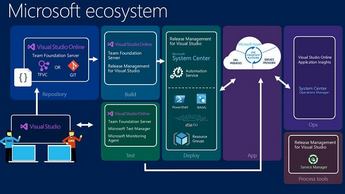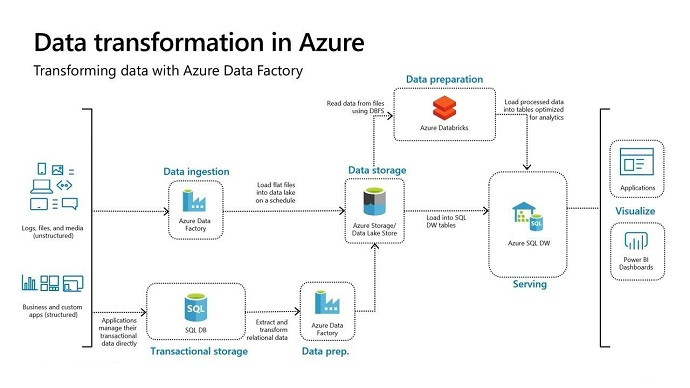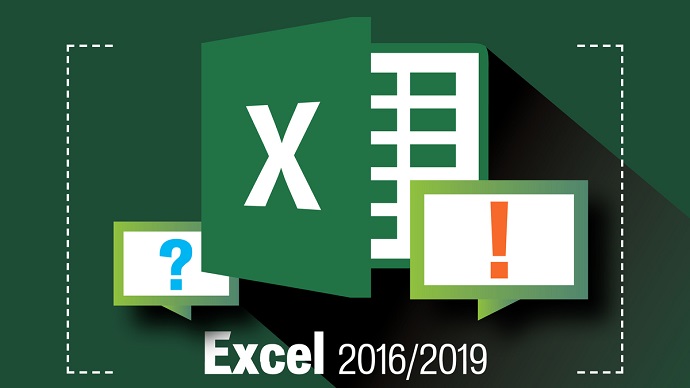
MO-100: Microsoft Word (Word and Word 2019)
PDFs and exam guides are not so efficient, right? Prepare for your Microsoft examination with our training course. The MO-100 course contains a complete batch of videos that will provide you with profound and thorough knowledge related to Microsoft certification exam. Pass the Microsoft MO-100 test with flying colors.

Curriculum for MO-100 Certification Video Course
| Name of Video | Time |
|---|---|
 1. 1.1 Search for text |
3:00 |
 2. 1.1.2 and 1.1.3 (Part 1) Link to specific objects and locations within documents |
6:00 |
 3. 1.1.2 and 1.1.3 (Part 2) Link to specific objects and locations within documents |
3:00 |
 4. 1.1.4 Show and hide formatting symbols and hidden text |
2:00 |
| Name of Video | Time |
|---|---|
 1. 1.2.1 Set up document pages |
6:00 |
 2. 1.2.2 Apply style sets |
3:00 |
 3. 1.2.3 Insert and modify headers and footers |
7:00 |
 4. 1.2.4 Configure page background elements |
5:00 |
| Name of Video | Time |
|---|---|
 1. 1.3.1 Save documents in alternative file formats |
6:00 |
 2. 1.3.2 Modify basic document properties |
3:00 |
 3. 1.3.3 Modify print settings |
5:00 |
 4. 1.3.4 Share documents electronically |
5:00 |
| Name of Video | Time |
|---|---|
 1. 1.4.1 Locate and remove hidden properties and personal information |
2:00 |
 2. 1.4.2 Locate and correct accessibility issues |
3:00 |
 3. 1.4.3 Locate and correct compatibility issues |
2:00 |
| Name of Video | Time |
|---|---|
 1. 2.1.1 Find and replace text |
9:00 |
 2. 2.1.2 Insert symbols and special characters |
1:00 |
| Name of Video | Time |
|---|---|
 1. 2.2.1 and 2.2.5 Apply Text Effects and Clear Formatting |
5:00 |
 2. 2.2.2 Apply formatting by using Format Painter |
2:00 |
 3. 2.2.3 (Part 1) Set line and paragraph spacing and indentation |
6:00 |
 4. 2.2.3 (Part 2) Set line and paragraph spacing and indentation |
10:00 |
 5. 2.2.4 Apply built-in styles to text |
7:00 |
| Name of Video | Time |
|---|---|
 1. 2.3.1 to 2.3.3 Create and Configure Document Sections |
8:00 |
| Name of Video | Time |
|---|---|
 1. Introduction to Tables |
5:00 |
 2. 3.1.1 and 3.1.2 Convert text to tables and tables to text |
5:00 |
 3. 3.1.3 Create tables by specifying rows and columns |
7:00 |
| Name of Video | Time |
|---|---|
 1. 3.2.1 Sort table data |
5:00 |
 2. 3.2.2 to 3.2.4 Configure Tables |
8:00 |
 3. 3.2.5 and 3.2.6 Split Tables and Configure Repeating Row Header |
2:00 |
| Name of Video | Time |
|---|---|
 1. 3.3.1 to 3.3.6 Create and Modify Lists |
10:00 |
| Name of Video | Time |
|---|---|
 1. 4.1.1 and 4.1.2 Insert and modify footnotes and endnotes |
7:00 |
 2. 4.1.3, 4.1.4 and 4.2.3 Create, modify and insert bibliography citation sources |
8:00 |
| Name of Video | Time |
|---|---|
 1. 4.2.1 & 4.2.2 Insert and customise table of contents |
8:00 |
| Name of Video | Time |
|---|---|
 1. 5.1.1 Insert shapes |
5:00 |
 2. 5.1.2 Insert pictures |
3:00 |
 3. 5.1.3 and 5.2.6 Insert and Format 3D models |
6:00 |
 4. 5.1.4, 5.2.5 and 5.3.3 Insert, format and modify SmartArt graphics |
8:00 |
 5. 5.1.5 Insert screenshots and screen clippings |
2:00 |
 6. 5.1.6, 5.3.1 and 5.3.2 Insert Text Boxes and Add and Modify Text |
4:00 |
| Name of Video | Time |
|---|---|
 1. 5.2.1 and 5.2.2 Apply artistic effects, picture effects and picture styles |
4:00 |
 2. 5.2.3 Remove picture backgrounds |
2:00 |
 3. 5.2.4 Format graphic elements |
6:00 |
| Name of Video | Time |
|---|---|
 1. 5.4.1 Position objects |
2:00 |
 2. 5.4.2 Wrap text around objects |
3:00 |
 3. 5.4.3 Add alternative text to objects for accessibility |
3:00 |
| Name of Video | Time |
|---|---|
 1. 6.1.1 to 6.1.4 Add, Review, Reply, Resolve, Delete and Manage Comments |
6:00 |
 2. 6.2.1 to 6.2.4 Manage Change Tracking |
9:00 |
| Name of Video | Time |
|---|---|
 1. Objective Domain 1.1 Solutions |
4:00 |
 2. Objective Domain 1.2 Solutions |
5:00 |
 3. Objective Domain 1.3 Solutions |
4:00 |
 4. Objective Domain 1.4 Solutions |
3:00 |
 5. Objective Domain 2.1 Solutions |
3:00 |
 6. Objective Domain 2.2 Solutions |
8:00 |
 7. Objective Domain 2.3 Solutions |
3:00 |
 8. Objective Domain 3.1 Solutions |
8:00 |
 9. Objective Domain 3.2 Solutions |
8:00 |
 10. Objective Domain 3.3 Solutions |
5:00 |
 11. Objective Domain 4.1 Solutions |
8:00 |
 12. Objective Domain 4.2 Solutions |
4:00 |
 13. Objective Domain 5.1 Solutions |
5:00 |
 14. Objective Domain 5.2 Solutions |
6:00 |
 15. Objective Domains 5.3 and 5.4 Solutions |
5:00 |
 16. Objective Domain 6.1 Solutions |
3:00 |
 17. Objective Domain 6.2 Solutions |
5:00 |
Microsoft Word MO-100 Exam Dumps, Practice Test Questions
100% Latest & Updated Microsoft Word MO-100 Practice Test Questions, Exam Dumps & Verified Answers!
30 Days Free Updates, Instant Download!
MO-100 Premium Bundle

- Training Course: 64 Video Lectures
- Study Guide: 296 Pages
- Latest Questions
- 100% Accurate Answers
- Fast Exam Updates
Microsoft MO-100 Training Course
Want verified and proven knowledge for Microsoft Word (Word and Word 2019)? Believe it's easy when you have ExamSnap's Microsoft Word (Word and Word 2019) certification video training course by your side which along with our Microsoft MO-100 Exam Dumps & Practice Test questions provide a complete solution to pass your exam Read More.
Excel MO-100 Certification Prep: Learn Advanced Excel Skills Fast
Complete Guide to MO-100 Microsoft Word Associate Exam Preparation
Course Overview
The Microsoft MO-100 certification is designed for individuals looking to demonstrate proficiency in Microsoft Excel and gain recognized credentials that validate their Excel skills. This course provides a structured path for learners who want to master Excel from the basics to an intermediate level while preparing for the MO-100 exam. Excel has become an essential tool in business, finance, data analysis, and reporting, making this certification highly valuable for professionals across various industries.
By completing this course, learners will not only develop confidence in using Excel but will also gain practical skills that can be applied immediately in real-world scenarios. The course emphasizes hands-on practice and practical exercises to ensure that students understand Excel formulas, functions, data analysis tools, and visualization techniques.
Throughout the course, learners will explore key Excel features, including formulas, functions, formatting, charts, pivot tables, and data management techniques. This combination of theory and practice equips students with the knowledge required to efficiently handle tasks in Microsoft Excel while ensuring they are well-prepared for the MO-100 certification exam.
What You Will Learn from This Course
How to navigate the Microsoft Excel interface efficiently, including ribbons, menus, and toolbars
Mastering basic and intermediate formulas for calculations and data analysis
Utilizing essential Excel functions such as SUM, AVERAGE, IF statements, and VLOOKUP
Formatting cells, tables, and worksheets to create professional and readable spreadsheets
Data entry techniques, including importing, editing, and validating information
Introduction to charts and graphs for effective data visualization
Organizing and managing large datasets through sorting, filtering, and structured tables
Understanding and applying conditional formatting to highlight key data points
Preparing for the MO-100 exam with targeted practice exercises and sample questions
Developing skills to automate repetitive tasks and improve workflow efficiency
Applying Excel tips and tricks to enhance productivity and accuracy in daily tasks
This course is designed to provide a well-rounded foundation in Excel while also emphasizing exam readiness. Each lesson builds upon the previous one, allowing learners to progress logically from simple to more complex tasks.
Learning Objectives
The primary goal of this course is to equip learners with the skills necessary to succeed in both professional Excel tasks and the MO-100 exam. By the end of the course, students will be able to:
Navigate Microsoft Excel confidently, understanding all essential components of the interface
Perform calculations using a variety of Excel formulas and functions accurately
Analyze datasets efficiently using Excel’s built-in data management and analysis tools
Create visually appealing charts, graphs, and tables to present data effectively
Apply conditional formatting and other formatting techniques to highlight important information
Utilize data validation and named ranges to maintain organized and reliable spreadsheets
Understand and execute basic automation techniques to save time on repetitive tasks
Prepare strategically for the MO-100 exam by practicing with real-world scenarios
Apply practical Excel skills to workplace tasks, enhancing efficiency and productivity
By focusing on both technical skills and exam strategies, this course ensures that learners gain comprehensive Excel expertise while building confidence to achieve certification.
Requirements
This course is designed to be accessible to a wide range of learners, from beginners to those with some experience in Excel. However, certain requirements will ensure students can make the most of the training:
Access to a computer with Microsoft Excel installed (preferably the latest version)
Basic computer literacy, including familiarity with using a keyboard and mouse
Willingness to practice exercises and explore Excel features hands-on
A desire to develop Excel skills for professional or personal growth
Internet access for accessing online resources, tutorials, and practice materials
No prior advanced knowledge of Excel is required, as this course starts with foundational concepts and builds toward intermediate skills. Learners who meet these requirements will be able to engage fully with the course content and maximize learning outcomes.
Course Description
This Microsoft MO-100 training course offers a comprehensive introduction to Excel while preparing learners for the MO-100 certification exam. The course combines theoretical explanations, practical exercises, and real-world examples to ensure that students develop a deep understanding of Excel’s capabilities.
The training begins with an overview of the Excel interface, guiding learners through the essential components of spreadsheets, menus, ribbons, and commands. Students will then progress to mastering basic calculations and formulas, including addition, subtraction, multiplication, and division, before moving on to more complex functions like IF statements, logical functions, and lookup formulas.
Data management and organization are emphasized throughout the course. Learners will practice sorting and filtering data, creating structured tables, and applying data validation to ensure accuracy and reliability. Conditional formatting techniques are also introduced to highlight trends and key information automatically, providing both functional and visual improvements to spreadsheets.
Visualization is another core focus of the course. Learners will create various charts, graphs, and pivot tables to summarize data and convey insights effectively. Step-by-step exercises ensure that learners not only understand how to create these visualizations but also when and why to use them in real-world applications.
The course also introduces time-saving tips and automation techniques, enabling learners to streamline repetitive tasks and improve workflow efficiency. Practical exercises and projects throughout the course reinforce learning and provide opportunities to apply skills in realistic scenarios.
In preparation for the MO-100 exam, the course includes sample questions, practice exercises, and exam-taking strategies. This ensures that learners are familiar with the format of the exam, types of questions, and key topics covered, giving them the confidence and skills needed to succeed.
Overall, this course balances theory and practical application, providing learners with a strong foundation in Excel while preparing them for professional certification and enhanced career opportunities.
Target Audience
This course is ideal for a wide range of learners who want to enhance their Excel skills or pursue Microsoft certification:
Professionals seeking to improve their Excel proficiency for workplace tasks
Students preparing for careers in finance, accounting, data analysis, or administration
Individuals preparing to take the MO-100 certification exam
Office managers, analysts, and team members who work regularly with data
Anyone interested in learning Excel for personal or professional projects
Beginners who want structured guidance on Excel fundamentals
Intermediate users aiming to strengthen their skills and prepare for advanced tasks
The course is designed to accommodate different learning levels, providing foundational knowledge for beginners while offering intermediate challenges to help learners grow their skills progressively.
Prerequisites
While there are no strict prerequisites for this course, certain skills and knowledge can help learners get the most out of the training:
Familiarity with basic computer operations, such as using a keyboard, mouse, and navigating software applications
Basic understanding of numbers, arithmetic operations, and data entry principles
Experience with other Microsoft Office applications like Word or PowerPoint can be beneficial but is not required
A willingness to practice and explore Excel features independently
Access to Microsoft Excel software for hands-on exercises
Learners who meet these prerequisites will be better positioned to absorb course content quickly and effectively. However, the course is designed to guide beginners through the necessary concepts, making it accessible to anyone motivated to learn Excel.
Excel Interface and Navigation
Understanding the Excel interface is critical for building confidence and efficiency in using the software. Learners will explore the Excel window, including the ribbon, toolbars, worksheet tabs, and status bar. Customizing the ribbon and quick access toolbar is also covered to enhance workflow and make frequently used commands easily accessible.
Students will practice navigating between worksheets, selecting cells, and using keyboard shortcuts to streamline their work. Understanding how to move efficiently through spreadsheets, locate tools, and access functions is essential for productivity and forms the foundation for more advanced Excel skills.
Data Entry and Management
Accurate data entry is a core skill for Excel users. Learners will explore techniques for entering numbers, text, dates, and formulas. Methods for copying, pasting, and filling cells efficiently are introduced to save time and reduce errors.
Organizing data into structured tables allows learners to analyze information more effectively. This includes naming ranges, creating tables with headers, and ensuring consistency in data formatting. Students will also learn how to sort and filter data, enabling them to quickly find specific information and manage large datasets.
Basic Formulas and Functions
Building a strong foundation in formulas and functions is crucial for success in Excel. The course covers essential formulas such as addition, subtraction, multiplication, and division. Students will also learn how to use functions like SUM, AVERAGE, COUNT, and MIN/MAX to perform calculations automatically and efficiently.
Logical functions, including IF statements, are introduced to allow learners to make decisions within their spreadsheets. Lookup functions, such as VLOOKUP, enable students to retrieve data from large datasets quickly, enhancing efficiency and accuracy in data management.
Formatting Techniques
Professional spreadsheets are easy to read and visually appealing. Learners will explore formatting techniques, including adjusting fonts, colors, borders, and alignment. Conditional formatting is introduced to highlight trends, outliers, or important information automatically, making data analysis more intuitive.
Students will also learn how to format numbers, dates, and text for clarity, ensuring that spreadsheets are both functional and visually professional. Formatting skills are essential not only for appearance but also for interpreting data effectively.
Charts and Visualizations
Visual representation of data makes analysis and communication easier. This course introduces learners to various chart types, including bar charts, line charts, pie charts, and combination charts. Students will practice creating charts, customizing elements like titles, labels, and legends, and formatting charts for clarity and impact.
Pivot charts are also covered to provide dynamic visualization options. By linking charts to pivot tables, learners can create interactive and responsive visualizations that summarize complex data efficiently.
Course Modules/Sections
The Microsoft MO-100 training course is organized into modules that gradually increase in complexity, ensuring that learners build a strong foundation before tackling more advanced Excel tasks. The first module reinforces basic Excel skills, while the subsequent modules focus on intermediate features, advanced formulas, and data management techniques. Each module is designed to provide practical experience through hands-on exercises, real-world examples, and step-by-step instructions.
The course begins with modules that review basic formulas, formatting, and navigation while emphasizing efficiency and accuracy. Learners will then progress to modules that introduce logical functions, lookup formulas, and conditional formatting. Data management and analysis are covered extensively, including sorting, filtering, creating structured tables, and using named ranges for better organization.
Advanced modules focus on data visualization and analytical skills. Pivot tables and pivot charts are introduced to allow learners to summarize large datasets and extract meaningful insights. These modules also cover creating dynamic charts, graphs, and dashboards that can communicate complex information in a clear and visually appealing way.
Throughout the modules, learners are encouraged to apply Excel tips and techniques that improve productivity. Each section builds upon the previous one, reinforcing concepts while introducing new skills. By the end of the course, learners will have a well-rounded understanding of Excel functionality, intermediate formulas, data management strategies, and visualization techniques, all of which are essential for passing the MO-100 exam.
Key Topics Covered
The course covers a wide range of topics that are essential for achieving proficiency in Microsoft Excel and succeeding in the MO-100 certification exam. Key topics include:
Advanced Formulas and Functions: Learners explore IF statements, nested formulas, logical functions, and lookup functions like VLOOKUP, HLOOKUP, and XLOOKUP. These functions allow users to analyze data efficiently and perform complex calculations accurately.
Data Management Techniques: This includes sorting and filtering data, creating structured tables, applying named ranges, and using data validation to ensure accuracy and consistency.
Conditional Formatting: Students learn to apply rules that highlight important information, making data analysis more intuitive and visually effective.
Charts and Graphs: The course covers bar charts, line charts, pie charts, combination charts, and advanced visualization tools like pivot charts, allowing learners to present data in a compelling way.
Pivot Tables: Learners gain proficiency in summarizing, analyzing, and exploring large datasets with pivot tables, including grouping, filtering, and calculated fields.
Data Analysis Techniques: Using Excel’s built-in functions, students will learn to identify trends, analyze patterns, and create summaries for informed decision-making.
Automation and Efficiency Tools: The course introduces basic automation techniques, including macros and quick actions, to streamline repetitive tasks and save time.
Practical Applications: Real-world exercises are integrated throughout the modules, including financial modeling, reporting, and data visualization projects that reinforce learning.
By covering these topics, the course ensures that learners gain both theoretical knowledge and practical experience. Each topic is paired with hands-on exercises to build confidence and proficiency, preparing students for both workplace applications and the MO-100 exam.
Teaching Methodology
The teaching methodology employed in this course is designed to provide learners with a highly interactive and practical learning experience. Instead of relying solely on theoretical explanations, the course emphasizes hands-on practice through exercises and projects that simulate real-world scenarios. Learners are encouraged to apply what they learn immediately, which helps to reinforce concepts and improve retention.
Instructional content is delivered through a combination of video tutorials, step-by-step guides, and live demonstrations. Learners are guided through Excel tasks in a structured manner, with complex topics broken down into manageable segments. This approach ensures that learners understand each concept before moving on to more advanced material.
Collaborative learning is also encouraged, with opportunities for learners to discuss challenges, share solutions, and learn from one another’s experiences. Practical assignments allow learners to apply Excel formulas, functions, and data analysis tools in realistic contexts, reinforcing their ability to solve problems independently.
In addition, the course integrates Excel tips, shortcuts, and best practices throughout the modules, helping learners to work efficiently and effectively. This methodology not only prepares students for the MO-100 exam but also equips them with skills that can be applied directly to professional tasks, enhancing productivity and confidence in using Microsoft Excel.
Assessment & Evaluation
Assessment and evaluation in this course are designed to measure both theoretical knowledge and practical Excel skills. Learners are assessed through a combination of quizzes, hands-on exercises, project assignments, and practice exams. Each assessment is aligned with the topics covered in the course, ensuring that learners are evaluated on the specific skills required for the MO-100 certification.
Quizzes are used to test understanding of key concepts, formulas, and functions, while hands-on exercises evaluate learners’ ability to apply Excel skills in realistic scenarios. Project assignments require students to complete tasks such as creating spreadsheets, analyzing datasets, and developing charts or pivot tables, providing practical experience that mirrors workplace applications.
Practice exams are included to simulate the MO-100 exam environment. These assessments allow learners to familiarize themselves with question formats, time constraints, and problem-solving requirements. Detailed feedback is provided after each assessment, highlighting strengths and areas for improvement, which helps learners focus their study efforts effectively.
Continuous evaluation throughout the course ensures that learners track their progress and gain confidence in their abilities. By combining multiple assessment methods, the course provides a comprehensive measure of learner competence, ensuring readiness for both the certification exam and professional Excel tasks.
Advanced Formulas and Functions
Building on foundational skills, learners dive deeper into Excel formulas and functions, which are critical for analyzing data effectively. Logical functions, such as IF, AND, and OR, allow students to perform conditional calculations and decision-making tasks. Nested formulas, which combine multiple functions, are also covered to handle complex scenarios efficiently.
Lookup functions, including VLOOKUP, HLOOKUP, and XLOOKUP, are essential for retrieving information from large datasets. Students practice using these functions in practical exercises, enabling them to find and analyze data quickly. Other important functions, such as SUMIF, COUNTIF, and TEXT functions, are also introduced to automate calculations and improve accuracy.
Students learn not only how to apply these functions but also how to troubleshoot errors and optimize formulas for efficiency. Real-world examples are used to demonstrate when and how to use each function, helping learners understand the practical applications of Excel formulas beyond theoretical exercises.
Data Management and Organization
Effective data management is a key skill for intermediate Excel users. The course emphasizes techniques for organizing and structuring data, including sorting and filtering information to quickly find relevant entries. Structured tables are introduced to facilitate easy navigation, referencing, and analysis of datasets.
Named ranges are used to simplify formulas and improve spreadsheet readability. Data validation is also covered, allowing learners to control the type and format of data entered into cells, which reduces errors and enhances data integrity. Students practice applying these techniques in realistic scenarios, such as preparing reports, tracking inventory, or managing project data.
By mastering data management and organization, learners can handle large datasets efficiently, identify trends, and produce accurate analyses, which are essential skills for both the MO-100 exam and professional Excel use.
Conditional Formatting and Visualization
Conditional formatting is a powerful tool that allows users to highlight data dynamically based on specific criteria. Learners practice creating rules to identify outliers, trends, or important values automatically. This enhances the clarity and usability of spreadsheets while making data analysis more efficient.
Data visualization is another core component of the course. Students learn to create charts, graphs, and dashboards to present data in a visually appealing way. Techniques for customizing chart elements, such as titles, labels, legends, and colors, are covered to ensure that visualizations effectively communicate insights. Pivot charts are introduced as a dynamic method for summarizing large datasets, enabling learners to analyze and present information interactively.
These skills help learners not only in professional reporting but also in preparing for the MO-100 exam, where data visualization questions may appear.
Practical Exercises and Real-World Applications
Throughout the course, learners engage in practical exercises that simulate real-world Excel tasks. Assignments include creating budget spreadsheets, analyzing sales data, tracking project progress, and generating reports with charts and pivot tables. These exercises provide hands-on experience and reinforce concepts taught in the modules.
By applying Excel skills in realistic contexts, learners develop problem-solving abilities and confidence in using formulas, functions, and data management tools. Each exercise is designed to challenge learners while providing clear instructions and guidance, ensuring that students can complete tasks independently and accurately.
Practical exercises also include time-saving tips, shortcuts, and best practices, helping learners work efficiently and effectively. These activities prepare students not only for the MO-100 exam but also for professional tasks that require intermediate Excel proficiency.
Intermediate Excel Tips and Tricks
To enhance productivity and streamline workflow, the course includes intermediate Excel tips and tricks. Learners discover shortcuts for navigating worksheets, entering data efficiently, and formatting cells quickly. Techniques for copying formulas without errors, using relative and absolute references, and managing multiple worksheets simultaneously are also introduced.
Additional tips cover error checking, formula auditing, and troubleshooting, enabling learners to identify and correct mistakes in their spreadsheets. By integrating these tips into their workflow, students can save time, reduce errors, and work more effectively, which is essential for both certification preparation and professional tasks.
Preparing for MO-100 Exam Sections
The course also emphasizes strategies for tackling intermediate-level MO-100 exam questions. Learners practice identifying the type of function or formula required, applying conditional formatting rules, and analyzing datasets accurately. Sample questions simulate the exam environment, allowing students to test their knowledge and problem-solving skills under time constraints.
Step-by-step guidance is provided to explain correct answers, common pitfalls, and strategies for approaching complex questions. This ensures that learners gain confidence in their ability to perform intermediate Excel tasks while preparing for certification success.
Benefits of the Course
Enrolling in this Microsoft MO-100 training course provides numerous benefits for both professional and personal development. One of the most significant advantages is the acquisition of practical Microsoft Excel skills that can be applied immediately in workplace tasks, academic projects, or personal data management. By completing this course, learners develop proficiency in formulas, functions, data management, and visualization techniques that enhance efficiency, accuracy, and productivity.
Another key benefit is the preparation for the MO-100 certification exam. Certification demonstrates expertise in Microsoft Excel, making learners more competitive in the job market and potentially opening doors to promotions, higher salaries, and career advancement opportunities. Employers recognize certified individuals as capable of handling complex data-related tasks, managing large datasets, and producing accurate reports and analyses.
The course also enhances problem-solving and analytical thinking skills. Learners practice analyzing trends, identifying patterns, and summarizing data effectively, which are essential skills in finance, accounting, marketing, project management, and data analytics. Additionally, exposure to intermediate and advanced Excel features allows learners to streamline workflows, automate repetitive tasks, and save valuable time.
Furthermore, the course promotes confidence in using Excel for complex tasks. Students learn to navigate large spreadsheets, create pivot tables, develop dynamic charts, and utilize formulas efficiently. These skills not only improve day-to-day productivity but also prepare learners to tackle real-world challenges with Excel confidently. By combining practical skills, exam preparation, and professional application, the course offers a comprehensive learning experience that delivers long-term value.
Course Duration
The duration of the Microsoft MO-100 training course is designed to provide comprehensive coverage of intermediate and advanced Excel skills while allowing learners to progress at a manageable pace. The course is structured to be completed over several weeks, with each module focusing on specific topics and providing ample time for practice, exercises, and review.
On average, learners can expect to spend approximately 40 to 50 hours completing the course. This includes time spent watching tutorials, practicing exercises, completing projects, and reviewing materials. The course is flexible, allowing learners to study at their own pace and revisit challenging topics as needed. This flexibility is particularly beneficial for working professionals or students who need to balance training with other commitments.
Each module is broken into manageable sections that focus on specific Excel skills or techniques. Learners can complete sections in short study sessions, gradually building confidence and proficiency. Regular assessments, quizzes, and practical exercises are integrated throughout the course to ensure that learners are making progress and retaining knowledge effectively.
By the end of the course, learners will have completed comprehensive practice assignments and sample exercises that simulate real-world tasks and exam scenarios. This ensures that they are fully prepared to apply Excel skills in professional contexts and achieve success in the MO-100 certification exam.
Tools & Resources Required
To fully benefit from this Microsoft MO-100 training course, learners need access to a few essential tools and resources. The primary requirement is Microsoft Excel software, preferably the latest version, to ensure compatibility with course exercises and features. Both Windows and Mac versions of Excel are supported, although some interface elements may differ slightly.
A computer or laptop with sufficient processing power and memory is necessary for handling large datasets, complex formulas, and pivot tables efficiently. Learners should also have access to a reliable internet connection for accessing online tutorials, video demonstrations, and supplementary resources.
Additional resources include practice spreadsheets, sample datasets, and guided exercises provided within the course. These materials allow learners to practice formulas, functions, charts, and pivot tables in realistic scenarios. Access to online Excel communities, forums, and instructional videos can further enhance the learning experience by providing additional tips, troubleshooting advice, and opportunities to collaborate with other learners.
Basic familiarity with computer operations, such as using a keyboard, mouse, file management, and navigation, is recommended to maximize learning efficiency. While prior Excel experience is not mandatory, having foundational knowledge of formulas, data entry, and basic formatting can help learners progress more quickly through intermediate and advanced modules.
By having the right tools and resources, learners can fully engage with the course content, complete practical exercises effectively, and build the skills necessary to succeed in the MO-100 exam and professional Excel tasks.
Data Analysis Techniques
Data analysis is a core component of Excel proficiency and a critical focus of the MO-100 certification. Learners are introduced to a variety of techniques for examining, interpreting, and summarizing datasets efficiently. Sorting and filtering are foundational skills, allowing users to arrange data in ascending or descending order, isolate specific information, and identify trends quickly.
Structured tables enhance data analysis by organizing information into defined rows and columns with headers. This enables users to reference data efficiently using formulas and to perform calculations across dynamic ranges. Named ranges simplify formula creation, improve readability, and reduce errors when analyzing datasets.
Intermediate learners are guided through conditional analysis techniques. This includes using logical functions, such as IF, AND, OR, and nested formulas, to create rules and perform calculations based on conditions within datasets. SUMIF, COUNTIF, and AVERAGEIF functions allow learners to summarize data selectively, providing targeted insights for decision-making.
Students also practice combining functions to solve real-world problems, such as calculating performance metrics, tracking sales data, or preparing financial reports. Emphasis is placed on accuracy, efficiency, and the ability to interpret results effectively, skills that are valuable for workplace applications and exam readiness.
Pivot Tables and Pivot Charts
Pivot tables are one of the most powerful tools in Excel for data analysis. Learners explore how to create pivot tables to summarize large datasets, identify patterns, and generate actionable insights. Instruction covers selecting data ranges, defining rows, columns, and values, and using calculated fields to perform custom calculations.
Pivot tables enable learners to explore multiple perspectives of data, grouping information by categories, aggregating totals, and filtering data dynamically. Pivot charts, which are linked to pivot tables, allow users to visualize the summarized data interactively. Students learn to create bar charts, line charts, pie charts, and combination charts that update automatically as the underlying data changes.
Real-world examples include analyzing sales performance, project timelines, customer demographics, and inventory management. Learners practice creating pivot tables and charts for various scenarios, gaining hands-on experience in summarizing complex datasets effectively and presenting insights clearly.
Advanced pivot table techniques, such as grouping, sorting, filtering, and using slicers, are introduced to enhance analytical flexibility. These skills are crucial not only for professional tasks but also for demonstrating proficiency in the MO-100 exam.
Advanced Data Visualization
Visualization is essential for interpreting and communicating data effectively. Learners explore various chart types and learn to customize charts to convey insights clearly. This includes modifying titles, labels, axes, legends, colors, and formatting to enhance readability and visual appeal.
Students also learn to create combination charts that display multiple types of data simultaneously, improving comparison and analysis. Conditional formatting techniques are applied to charts and tables to highlight trends, outliers, or important data points dynamically.
Interactive dashboards are introduced as an advanced application of Excel visualization tools. Learners practice linking multiple charts, tables, and data sources to create dashboards that provide an at-a-glance view of key performance indicators or project metrics. These dashboards are designed to update automatically as data changes, allowing for real-time monitoring and reporting.
Visualization exercises are tied to real-world scenarios, such as financial reporting, marketing performance analysis, and operational metrics tracking. This ensures that learners can apply visualization skills in professional contexts, enhancing decision-making and communication effectiveness.
Data Validation and Error Management
Data validation is an essential skill for maintaining accurate and reliable spreadsheets. Learners explore techniques for restricting data entry, setting rules for acceptable values, and creating dropdown lists for consistent input. Validation rules can be applied to numbers, dates, text, and custom formulas, reducing errors and improving data integrity.
Error management techniques are also introduced, including troubleshooting formulas, identifying common mistakes, and using error-checking tools. Students learn to interpret error messages, correct issues efficiently, and implement preventive measures to maintain data accuracy.
By mastering data validation and error management, learners can ensure that their spreadsheets are reliable and professional, which is critical for both workplace applications and the MO-100 exam.
Automation and Efficiency Techniques
To improve workflow efficiency, learners are introduced to basic automation techniques. Macros are used to automate repetitive tasks, such as formatting, data entry, or calculation processes. Students practice recording, editing, and running macros to streamline routine activities, saving time and reducing manual effort.
Additional efficiency techniques include keyboard shortcuts, formula optimization, and using quick actions to perform frequent tasks more effectively. Learners also explore methods for managing multiple worksheets, linking data across sheets, and creating templates for recurring projects.
These skills help learners work more efficiently in professional environments and demonstrate practical knowledge during the MO-100 exam, where proficiency in Excel functionality is tested.
Practical Projects and Exercises
The course incorporates a variety of practical projects and exercises designed to reinforce learning and provide hands-on experience. Projects include creating financial models, analyzing sales or marketing data, preparing operational reports, and designing dashboards. These assignments challenge learners to apply multiple skills simultaneously, including formulas, data analysis, pivot tables, charts, and automation techniques.
Step-by-step instructions guide students through the completion of each project while encouraging independent problem-solving and critical thinking. Practice exercises simulate real-world Excel tasks, helping learners develop confidence in applying intermediate and advanced skills.
Feedback and self-assessment tools allow learners to evaluate their performance, identify areas for improvement, and track progress throughout the course. By engaging with these practical exercises, students gain the experience necessary to perform effectively in professional roles and achieve success in the MO-100 certification exam.
Career Opportunities
Completing the Microsoft MO-100 training course opens doors to a wide range of career opportunities across multiple industries. Excel proficiency is one of the most sought-after skills in today’s job market, and certification demonstrates that an individual has both practical expertise and recognized credentials. Professionals with MO-100 certification are highly valued in fields such as finance, accounting, marketing, operations, project management, and data analysis.
Excel skills allow professionals to handle large datasets efficiently, perform complex calculations, and create insightful visualizations that support business decisions. Individuals with certification often pursue roles such as financial analysts, business analysts, data coordinators, project managers, operations specialists, and administrative professionals. In addition, Excel expertise can enhance career prospects in emerging fields like data analytics, business intelligence, and reporting.
Employers recognize that certified Excel users can produce accurate, efficient, and professional reports while utilizing advanced tools like pivot tables, macros, and dynamic dashboards. By completing the MO-100 course, learners gain confidence in their ability to handle real-world data challenges, making them more competitive for promotions, higher-level responsibilities, and specialized roles within organizations.
Beyond traditional roles, Excel skills also empower entrepreneurs, freelancers, and consultants to manage finances, analyze customer data, and optimize business operations effectively. The versatility of Excel, combined with certification, ensures that learners are equipped to pursue both corporate and independent career paths, enhancing long-term professional growth.
Enroll Today
Enrolling in the Microsoft MO-100 training course is the first step toward mastering Excel and achieving certification. The course is designed to accommodate learners of all levels, providing a structured path from foundational skills to intermediate and advanced techniques. With comprehensive modules, practical exercises, and exam-focused training, students gain the knowledge and confidence needed to succeed.
Enrollment provides access to a wide range of resources, including video tutorials, practice spreadsheets, sample exercises, and guidance on real-world Excel applications. Learners can study at their own pace, revisit challenging topics, and engage with practical projects that reinforce skills. Flexible learning ensures that working professionals and students can balance training with other commitments while progressing efficiently.
By enrolling today, learners invest in their career development, gaining proficiency in formulas, functions, data analysis, pivot tables, charts, and automation techniques. The course prepares students not only for the MO-100 certification exam but also for professional tasks that require intermediate and advanced Excel skills.
Practical exercises, hands-on projects, and exam simulation exercises provide a comprehensive learning experience, ensuring that learners are well-prepared for certification and ready to apply their skills in the workplace. Choosing to enroll in this course is an investment in professional growth, productivity, and career advancement, equipping students with the tools and expertise needed to succeed in a competitive job market.
Prepared by Top Experts, the top IT Trainers ensure that when it comes to your IT exam prep and you can count on ExamSnap Microsoft Word (Word and Word 2019) certification video training course that goes in line with the corresponding Microsoft MO-100 exam dumps, study guide, and practice test questions & answers.
Purchase Individually



Microsoft Training Courses
















































Only Registered Members can View Training Courses
Please fill out your email address below in order to view Training Courses. Registration is Free and Easy, You Simply need to provide an email address.
- Trusted by 1.2M IT Certification Candidates Every Month
- Hundreds Hours of Videos
- Instant download After Registration






